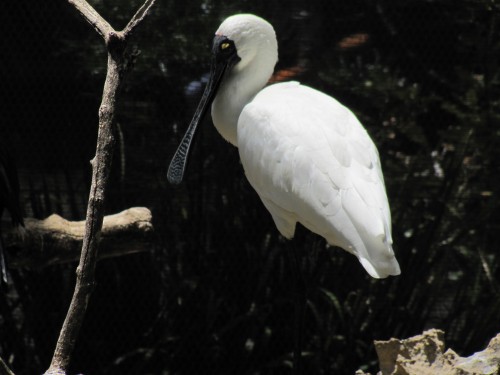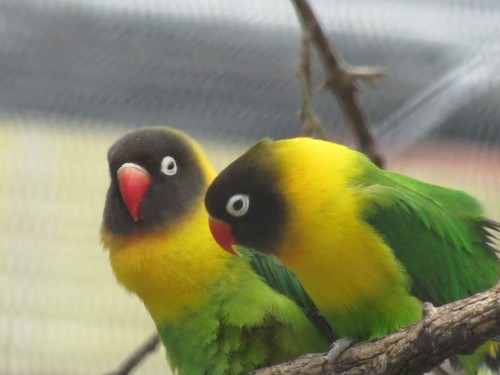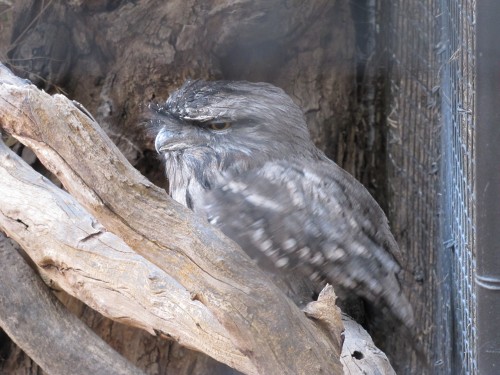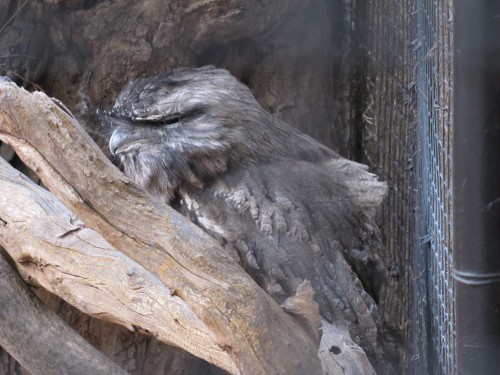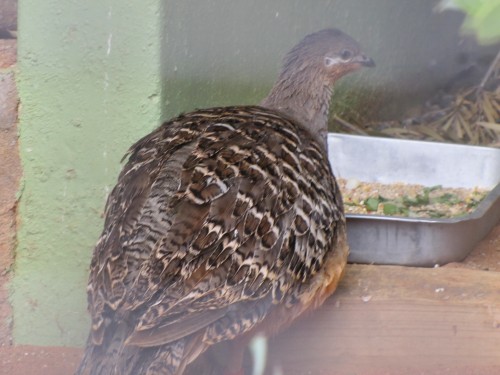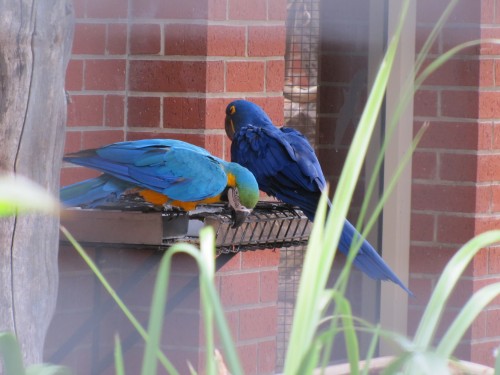Royal Spoonbill, Adelaide Zoo
Australia has two species of spoonbill, the Royal Spoonbill, shown above, and the Yellow-billed Spoonbill. The latter has a special place in my birding life; you can read here about how this bird played an important part in me becoming a birder.
I love seeing either of our species of spoonbill, so they are rather special birds to me. While both species are widespread throughout suitable habitat in Australia, in my experience they are generally not encountered in large numbers anywhere, usually from one individual to three or four in the same locality. Or perhaps I’m not looking in the right places.
Yellow-collared Lovebird, Adelaide Zoo
I must admit that I am not a fan of Lovebirds. I have heard that they can be very aggressive as a cage bird. I am also wary that some will escape from captivity and establish feral populations here in Australia. This has happened with other species over the years and it would mean that they would compete with native species for food and nesting sites.
Despite these feelings, I must admit that the birds shown in my photos today are attractive, so I can understand why some people would want to keep them as pets. These photos were taken through the wire of an aviary in the Adelaide Zoo here in South Australia.
Yellow-collared Lovebirds are native to Tanzania in southern Africa.
Tawny Frogmouth, Adelaide Zoo
The nocturnal bird called the Tawny Frogmouth is one of my favourite birds. Ever since we saw one in a tree above our tent near Lake Hattah in north west Victoria many years ago, this species has had a special place in our lives.
Being nocturnal, it is not a bird seen all that often. It is more commonly heard calling at night. From time to time we have one in our garden. One has even banged against our sliding glass door whilst catching a moth fluttering there.
Finding them in broad daylight is a challenge. They are usually well camouflaged perched on the limb of a tree, their feathers blending in with the colours and markings of the branch. When smaller birds – such as honeyeaters – become aware of the presence of a frogmouth or an owl for that matter, they set up quite a fuss, drawing attention to the roosting bird.
The bird shown in today’s photos is a captive bird, part of the excellent collection of birds of the Adelaide Zoo in South Australia.
Malleefowl in the Adelaide Zoo
The Malleefowl, a turkey-sized mound building bird of the drier parts of Australia, is a widespread but uncommon bird living in the region where I live. It is primarily a ground dwelling bird, feeding mainly on seeds. The male makes a large 2 to 3 metre wide mound of sand and vegetation like leaves, grass, bark and so on which acts like a compost heap.
The rotting vegetation develops heat which incubates the eggs the female lays and buries in the mound. The male works the mound daily during the summer months, adding or removing soil to regulate the temperature in the egg chamber. Not surprisingly, this bird is also known as the Incubator Bird. In all my years of birding I have only seen about a dozen of this species, but amazingly, I saw 6 in a one hour period.
The bird in the photo above is a captive bird in the Adelaide Zoo.
Macaws in the Adelaide Zoo
My home zoo is Adelaide Zoo, along with Monarto Zoo which is a ten minute drive from home. One of the strengths of Adelaide Zoo is its bird collection, mostly of Australian birds.
The zoo also boasts a good collection of non-Australian birds, including several macaw species such as those shown in the photo above. The bird on the left is a Blue and Gold Macaw, while the other is an Hyacinth Macaw. Both of these spectacular parrots are native to South America.
